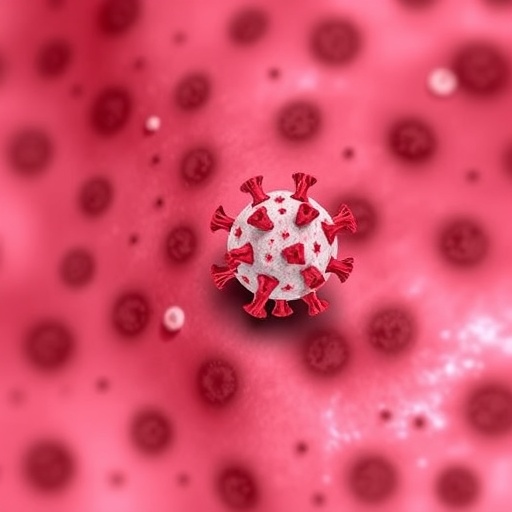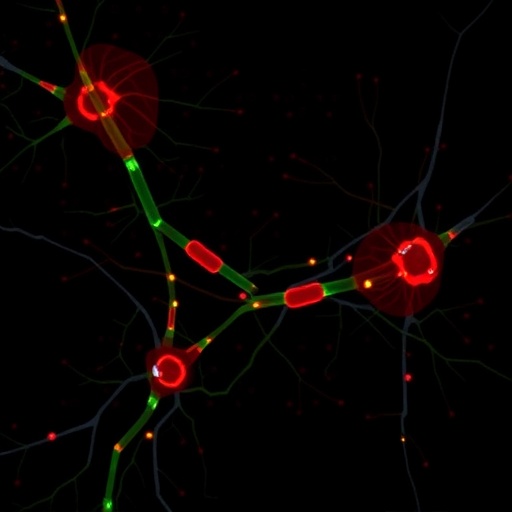In the realm of infectious diseases, the ongoing evolution of SARS-CoV-2 continues to challenge global health systems, demanding vigilant genomic surveillance to anticipate and curb future waves. A recent study emerging from Morocco offers an illuminating glimpse into the dynamic viral shifts propelling the COVID-19 pandemic forward. By meticulously tracking genomic variations over time, researchers have documented a consequential transition from the once-dominant Alpha variant to an emergent Omicron sublineage, designated JN1. This comprehensive genomic surveillance not only enriches our understanding of viral evolution within a localized context but also underscores the crucial role of sustained molecular monitoring in shaping public health responses.
Morocco’s geographic position as a nexus between Africa and Europe adds layers of complexity to viral spread and mutation patterns. The researchers employed next-generation sequencing techniques on viral samples collected across diverse regions and time points, enabling an intricate dissection of SARS-CoV-2’s genomic landscape. Through this temporal and spatial analysis, the study delineates how viral populations transitioned in dominance, exposing the nuanced interplay between viral fitness, immune pressures, and population movement that drive variant prevalence.
The Alpha variant, first identified in the United Kingdom in late 2020, initially surged through Morocco, mirroring global trends. Characterized by specific spike protein mutations such as N501Y and P681H, Alpha exhibited enhanced transmissibility relative to ancestral strains. However, as vaccination campaigns progressed and naturally acquired immunity accumulated, viral evolution favored variants capable of evading humoral defenses. This gradual immunological pressure orchestrated the emergence of Omicron variants, notable for their extensive spike alterations conferring increased neutralization resistance and altered receptor binding dynamics.
.adsslot_GiOq0RabTV{ width:728px !important; height:90px !important; }
@media (max-width:1199px) { .adsslot_GiOq0RabTV{ width:468px !important; height:60px !important; } }
@media (max-width:767px) { .adsslot_GiOq0RabTV{ width:320px !important; height:50px !important; } }
ADVERTISEMENT
Central to the Moroccan study’s findings is the detection of the Omicron JN1 sublineage, which supplanted Alpha as the predominant circulating variant during the surveillance period. The JN1 sublineage harbors a distinctive constellation of mutations distinguishing it from earlier Omicron strains, suggesting ongoing diversification. Key mutations affecting the receptor-binding domain and other antigenic sites likely enhance its ability to evade neutralizing antibodies and sustain transmission chains despite increasing population immunity.
The study’s authors highlight the importance of real-time genomic surveillance frameworks to promptly identify such shifts. By integrating sequencing data with epidemiological metrics, they could correlate variant turnover with changes in case incidence and vaccination coverage. This integrative approach provides actionable intelligence, facilitating calibrated public health interventions, from targeted vaccination drives to revised diagnostic assay updates tailored to emergent mutations.
Importantly, the Moroccan surveillance effort exemplifies the democratization of genomic technologies, demonstrating that resource-limited settings can successfully contribute to the global viral variant repository. The collaborative network of public health laboratories standardized data collection, sequencing protocols, and bioinformatic analyses, culminating in a robust dataset that enhances the scientific community’s collective repository for tracking SARS-CoV-2 evolution.
In-depth mutation profiling conducted by the researchers reveals not only spike protein adaptations but also changes in accessory and non-structural proteins. Such mutations may modulate viral replication efficiency, immune modulation, or pathogenicity. For instance, alterations in the NSP6 and ORF1ab regions, observed in the JN1 lineage, could influence viral fitness landscapes, potentially impacting disease severity and transmission dynamics.
The study also contextualizes the Moroccan variant dynamics within the broader African and global epidemiological framework. It discusses how international travel, local mobility patterns, and vaccination equity challenges collectively sculpt variant emergence and dissemination. These insights emphasize the necessity for transnational data sharing and coordinated surveillance efforts to anticipate and mitigate variant-driven surges.
Moreover, advances in phylogenetic methodologies enabled the authors to reconstruct the probable evolutionary trajectory of the JN1 sublineage. By mapping mutation accrual and estimating divergence times, the work provides temporal anchors that inform outbreak investigations and guide predictive modeling of future variant risks.
Despite the relentless emergence of variants, the research underscores that layered mitigation strategies—combining vaccination, non-pharmaceutical interventions, and vigilant surveillance—remain essential tools in pandemic management. The observed variant shifts signify viral adaptation to immune landscapes, reminding the scientific community of the evolutionary arms race underpinning COVID-19’s trajectory.
Beyond affording a snapshot of Morocco’s viral ecosystem, the findings prompt broader reflections on pandemic preparedness. The continuous evolution of SARS-CoV-2 underscores the imperative to invest in pathogen genomics infrastructure globally, enabling timely detection of variants with altered transmission or immune escape capacities. Such strategic investments not only serve COVID-19 efforts but also enhance readiness against future zoonotic threats.
Looking forward, the Moroccan genomic initiative plans to expand surveillance to encompass wastewater analyses and serological studies, enriching understanding of community-level viral prevalence and immunity. These multidisciplinary approaches promise to refine early warning systems, signaling emergent variants before widespread community transmission ensues.
This study epitomizes how granular molecular surveillance can powerfully illuminate viral evolution within real-world population contexts. As the virus evolves, so too must our strategies to detect, understand, and respond to these shifts. Morocco’s experience offers a compelling blueprint for other nations striving to harness genomic data in the service of public health imperatives.
Ultimately, the continuous tracking of variant dynamics embodies a vital scientific endeavor bridging virology, epidemiology, and public health practice. By documenting the Alpha-to-Omicron JN1 transition, this research contributes critical knowledge to the global understanding of SARS-CoV-2’s evolutionary pathways and informs adaptive responses that can save lives.
The Moroccan experience illustrates the profound impact that timely, high-resolution genomic data can have during a pandemic, transforming raw sequences into powerful narratives that chart the virus’s journey. As we navigate the ongoing challenges of COVID-19, such genomic vigilance remains a cornerstone of effective disease control and prevention worldwide.
Subject of Research: Genomic surveillance and variant evolution of SARS-CoV-2 in Morocco, focusing on the transition from the Alpha variant to the Omicron sublineage JN1.
Article Title: Genomic surveillance in Morocco tracks SARS-CoV-2 variant shift from Alpha to Omicron sublineage JN1.
Article References:
Bouddahab, O., Aqillouch, S., Charoute, H. et al. Genomic surveillance in Morocco tracks SARS-CoV-2 variant shift from Alpha to Omicron sublineage JN1. npj Viruses 3, 63 (2025). https://doi.org/10.1038/s44298-025-00145-6
Image Credits: AI Generated
Tags: Alpha variant transition to OmicronCOVID-19 viral evolution studygenomic landscape of COVID-19 variantsimmune pressure on viral fitnessimpact of population movement on virus spreadmolecular monitoring of infectious diseasesMorocco as a nexus for viral transmissionMorocco SARS-CoV-2 variant trackingnext-generation sequencing in AfricaOmicron JN1 genomic surveillancepublic health responses to COVID-19regional patterns of SARS-CoV-2 mutation





